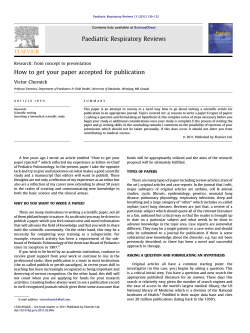
Reviewing CobbleStone Systems: Contract Web INFORMATION TECHNOLOGY
I N F O R M AT I O N TECHNOLOGY BY RYAN D. DICKOVER Reviewing CobbleStone Systems: Contract Web This site was reviewed in February 2005. Contract Web is CobbleStone System’s flagship product, designed for an enterprise-level implementation to help large companies upkeep, track, and manage their contract awards and proposals. A simpler version of the system is available for smaller businesses in the desktop edition, too—however, this review focuses on the product’s use at the corporate level. Users The heart of Contract Web is the idea that those who manage contracts in the private sector have a few key concerns. They want to ■ Stay on top of impending deadlines for contract renewals and expirations, ■ Monitor actual contract performance versus definitized numbers from the initial agreement, and ■ Know who is responsible for particular contracts. The Information Technology (IT) Corner profiles/reviews a new software program or suite each month. In the case of profiles, the information is provided to Contract Management (CM) by the vendor. Reviews are by-lined and express the opinion of the author. NCMA and CM do not necessarily endorse or support any vendor profiled/reviewed in the IT Corner. Anyone interested in reviewing software for the IT Corner should contact Kathryn Mullan at mullan@ncmahq.org or 571/382-1107. 56 ■ Contract Management / April 2005 To solve these and other issues, Contract Web uses a database tied into a Web server that can be deployed either by the firm or in the user’s own environment. The system is Microsoft-based, using SQL Server 2000—or users can to host it themselves, using Microsoft Internet Information Service (IIS). An FAQ on the product is available at http://cobblestonesystems.com/faqs.htm. Functions The Internet product demo I took went smoothly, and the ease of the system’s use is clear. The product helps accomplish main contract management goals (mentioned above) very well, without a lot of flash. The user has significant amounts of “idiot-proof” control over configuring system details to best match the particular organization. There are three significant modules to analyze. I N F O R M AT I O N (1) Contract Web Calendar. This calendar uses embedded links to show users what contracts are expiring. Clicking a link brings up a customizable details screen, which reveals everything related to the award: tasks, dollar amounts, people, start/end dates, and user-defined text boxes. You also can generate automatic e-mail alerts, triggered by user-defined events in the system. The ability to upload attachments also is impressive: With a scanner (preferably one that can output .tif file format), the user can create a paperless repository for the organization. (2) Report Generator. This tool is where Contract Web houses most of its added value. It lets users run canned reports and—with simple “click and fill” templates— make their own reports for whatever purpose desired. Reports can then be exported in any data format and automatically e-mailed. The module allows users to find out what contracts are behind in payments or soon to expire, and also can be tailored to assist in getting contracts (via a list of outstanding RFPs, assigned by category). This system can track subcontracts—and once, CobbleStone configured it to support multiple companies, too. (3) Company Information. This module permits the user to establish a user base of employees, locations, departments, and vendors. This module controls management’s ability to task contract responsibility to T E C H N O L O G Y certain individuals and offers security through access restrictions to certain reports or contracts. There are also features in Contract Web that allow for the user to accept contract requests over the Web, although in a limited sense (this is not an e-business application or resource management system capable of handling reverse auctions or tracking supplies). Additionally, Contract Web permits the development of contract templates, such as time-and-material, cost-plus-fixed-fee, firm-fixed-price, or custom-made terms and conditions. Conclusion The system would be a smart investment for a small or mid-sized business that has grown too large for internal Microsoft Office contracts management. Its target audience is the private sector, and while theoretically a public sector agency could augment the system for its own tracking and management needs, a significant amount of customization would be required to meet the needs of complex federal contracts or to be compatible with systems already in place. CM About the Reviewer RYAN D. DICKOVER is a contracting specialist. He is an Oraclecertified database administrator and holds an M.B.A. from Old Dominion University. Send comments on this article to cm@ncmahq.org. April 2005 / Contract Management ■ 57
© Copyright 2025





















